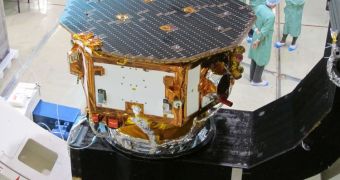Experts managing the LISA Pathfinder mission - which is being developed by the European Space Agency (ESA) – announce that the Optical Metrology Subsystem (OMS) instrument successfully completed its cryogenic tests recently.
What this means is that the scientific tool behaved within expected parameters when it was subjected to the harsh temperatures and vacuum conditions it will need to operate under when it reaches space.
LISA Pathfinder is being developed as a mission capable of discovering and analyzing gravitational waves. The latter are distortions in spacetime proposed by famed physicist Albert Einstein. He explained that such large-scale ripples are produced by massive gravitational interactions.
This is why ESA experts believe that the waves may be produced by two colliding black holes or neutron stars, by powerful cosmic blasts, and other such events. Additionally, it is also believed that a number of gravitational waves permeating the Universe today come from the Big Bang itself.
In order to detect these waves, the mission will use two free-floating gold-platinum cubes, each of which will use lasers to measure its own distance from its companion with extreme accuracy. The two spacecraft will be positioned very far away from each other.
If a gravitational wave passes through the area they cover, then the distance between the probes will change slightly, but to a measurable extent. The new cryogenic tests were conducted in order to ensure that the lasers remain capable of detecting such subtle variations even in harsh conditions.
During the assessments – which use mirrors instead of the actual spacecraft – it was found that the angles the two probes will have with respect to their laser beams will remain accurate in space to about 10 billionths of a degree.
These results exceed expected performances by between 200 and 300 percent, experts managing the mission say. The investigations were conducted at Industrieanlagen-Betriebsgesellschaft mbH (IABG), in Ottobrunn, Germany.
“The whole team has worked extremely hard to make this measurement possible. When LISA Pathfinder is launched and we're in the quiet environment of space some 1.5 million km from Earth, we expect that performance will be even better,” Paul McNamara explains.
The expert holds an appointment as a project scientist for the ESA mission. He says that the mission will most likely launch around 2014, from the Kourou Spaceport, in French Guiana, South America.

 14 DAY TRIAL //
14 DAY TRIAL //